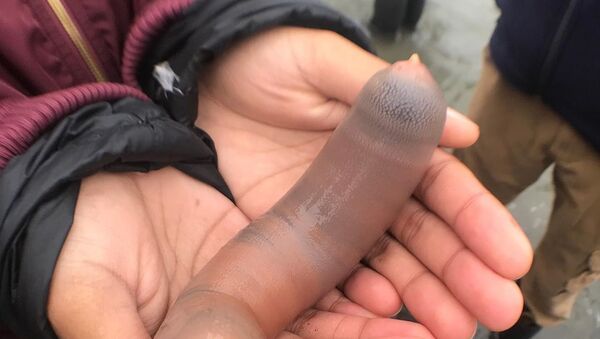Following a series of winter storms in northern California, a swarm of pink, throbbing, phallic creatures wound up pulsating along a beach north of San Francisco, Bay Nature reported. These creatures are marine worms called fat innkeeper worms, and usually, they burrow under the sand, far beneath the feet of beachgoers. The giant waves during the storms stripped the beach naked of the layers of sands, leaving the so-called “penis fish” exposed.
The creatures date back 300 million years. These worms can live for up to 25 years, and feed and swim using their “spatula-shaped proboscis.” It typically eats bacteria, plankton and other small particles which it collects using “sticky mucus nets.” They can also be eaten: in South Korea, a dish made of fat innkeeper worms is called gaebul and in China it can be served to tourists stir-fried as a local delicacy.




